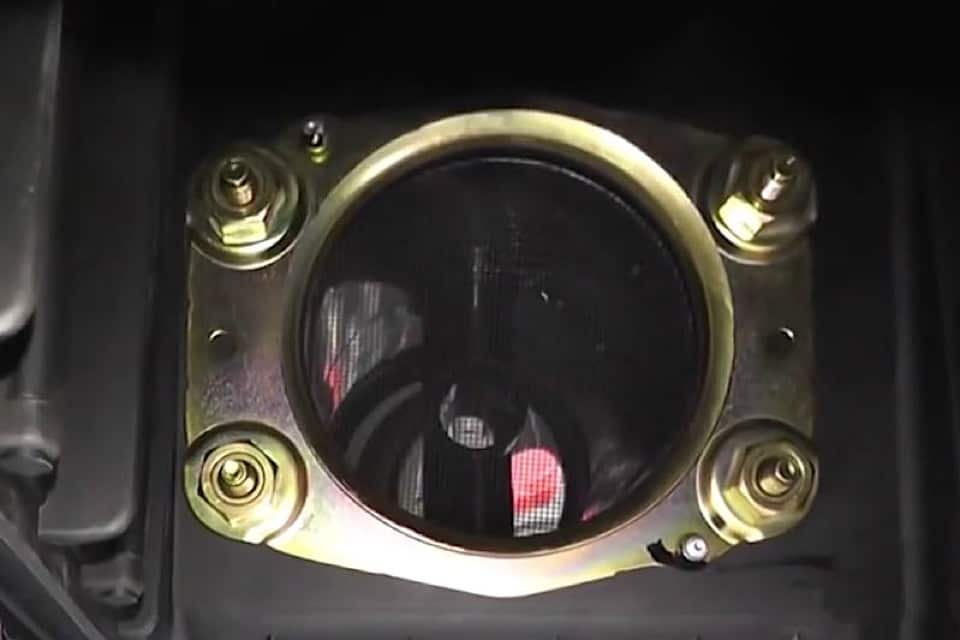Check Engine Light On? Check the MAF
- Infiniti i30 and i35 have problems with their mass airflow sensors (MAF) getting dirty or clogged.
- A clogged MAF makes the engine hard to start, run rough, or results in poor acceleration.
- Try cleaning the MAF before replacing it.

Intermittent check engine light? Trouble starting your engine? Trouble keeping your engine running? Hesitation or shaky acceleration? These could all be signs of a dirty or faulty Mass Airflow Sensor (MAF).
Infiniti owners – particularly i30 and i35 owners – have complained that they sometimes need to replace the MAF multiple times a year or face the consequences, such as poor acceleration and the engine stalling on the highway.
What is a Mass Airflow Sensor? ∞
An internal combustion engine needs a perfect fuel-to-air ratio to run smoothly. The MAF helps measure one piece of that equation.
The MAF is a round, round, plastic tunnel that can be found right behind the engine's air filter. Inside the tunnel is a disc of wires (or film) and as air passes through the tunnel, the MAF measures its mass (ah ha) every second, before the air continues on to the intake manifold.
Once measures, that continually changing air mass data is passed to the engine's Electronic Control Unit (ECU), which does a little math to figure out how much fuel should be injected into the engine's cylinders.
What Happens When it Starts MAFing Off? ∞
When the MAF gets dirty, clogged, or has an issue with its electrical connection, the airflow data passed to the ECU could be wrong or nulled out entirely.
Without that information, your engine will certainly have the wrong air-to-fuel ratio, which means you can expect:
- An engine that is hard to start
- An engine that stalls shortly after starting or
- An engine that runs roughly, particularly during acceleration
- An engine that idles unnecessary high and burns through excessive amounts of fuel
- A "check engine" warning light.
If the check engine light is on, bring your car to a mechanic or buy your own code reader and look for error code P0100. This code is usually triggered when the ECU receives low voltage from the MAF or higher-than-average voltage while idling.
Infiniti Vehicles with the Most MAF Problems ∞
| Model | Generation | Years |
|---|---|---|
| i30 | Gen 1 | 1996-1999 |
| Gen 2 | 2000-2004 | |
| i35 | Gen 2 | 2000-2004 |
Cleaning versus Replacing ∞
One aspect of the MAF that is under your control is keeping it clean. That starts with the first line of defense – regularly changing (or inspecting) your air filter. If only clean air is being passed to the MAF it significantly reduces the risk of it getting clogged.
Occasionally while changing the air filter you may want to choose to remove and inspect the MAF, or use a MAF-specific cleaning spray. The incomparable Scotty Kilmer has a pretty good tutorial on how that can be done:
If it looks clean, you can also check the voltage running to and from the MAF. That's demonstrated in this video by CarsNToys:
The best case scenario is the MAF is just dirty, because replacing it can cost hundreds of dollars.
MAF image is a screen capture from the CarsNToys video. Check them out on YouTube, great channel.
Generations Where This Problem Has Been Reported
This problem has popped up in the following Infiniti generations.
Most years within a generation share the same parts and manufacturing process. You can also expect them to share the same problems. So while it may not be a problem in every year yet, it's worth looking out for.
1st Generation I30
- Years
- 1996–1998
- Reliability
- 1st out of 30
- PainRank™
- 0.11
- Complaints
- 1
2nd Generation I30
- Years
- 1999–2004
- Reliability
- 9th out of 30
- PainRank™
- 0.51
- Complaints
- 8